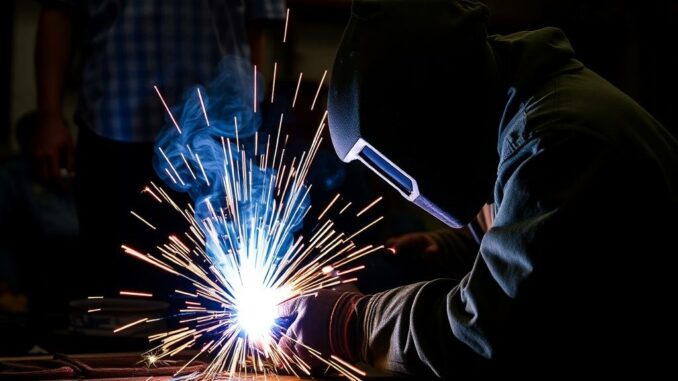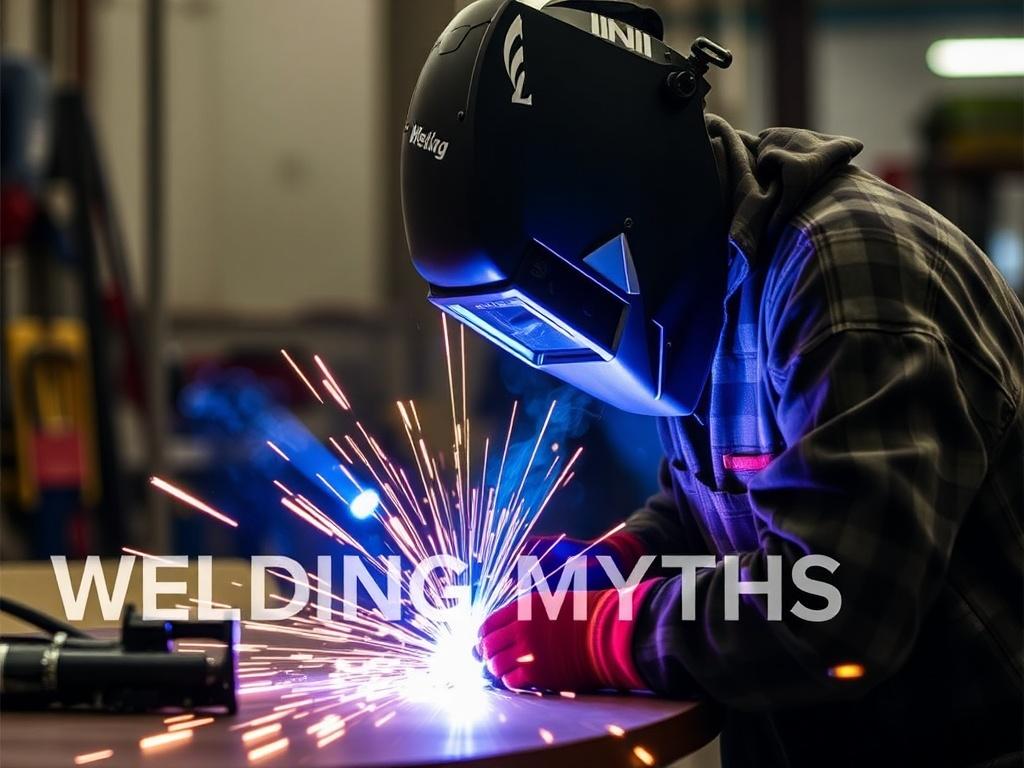
SQLITE NOT INSTALLED
Welding is an essential skill in countless industries, from construction to automotive repair, and even art. However, despite its importance, there are many myths and misconceptions surrounding welding that can cloud understanding and intimidate beginners. Whether you’re a hobbyist wanting to try your hand at metalwork or someone curious about the craft, this article will help you separate fact from fiction. We’ll explore common welding myths, clarify what’s true, and provide practical insights to help you approach welding with confidence.
Understanding Welding: More Than Just Joining Metals
Before diving into the myths, it’s worth taking a moment to understand what welding really is. At its core, welding involves joining two or more pieces of metal by heating the surfaces until they melt and fuse together. This can be achieved through a variety of methods such as MIG (metal inert gas), TIG (tungsten inert gas), and stick welding, among others. Each method has its own set of tools, techniques, and ideal applications.
Many people think welding is only about melting metals in a simple manner, but it is much more than that. It requires precision, knowledge of metallurgy, and an understanding of safety protocols. Getting to know the realities behind welding will help demystify the craft and expose some of the common myths that often deter newcomers.
Common Welding Myths and the Truth Behind Them
Let’s tackle some of the most pervasive myths about welding one by one. This section will not only debunk mistaken beliefs but also explain the realities, supported by practical examples and explanations.
Myth 1: Welding Is Extremely Dangerous and Only for Experts
One of the biggest myths about welding is that it’s inherently dangerous and should only be attempted by professionals. While it’s true that welding involves risks such as burns, eye damage, and exposure to fumes, these dangers can be managed effectively with proper precautions.
Anyone interested in welding can learn safe practices and get certified with the right training. Wearing protective gear, such as welding helmets, gloves, and flame-resistant clothing, along with working in a well-ventilated area, greatly reduces the risks. Many community colleges and technical schools offer beginner-friendly classes where safety and technique are taught thoroughly.
Myth 2: Welding Requires Expensive and Complex Equipment
It’s a common misconception that welding demands costly, high-tech machinery beyond the reach of an average person. While industrial welding setups can be pricey, there are affordable and user-friendly machines available, especially suitable for beginners and hobbyists.
For example, basic MIG welders can now be purchased for a few hundred dollars and operate with relatively simple controls. Some entry-level TIG welders are also compact and affordable. The key is to select the right equipment aligned with your needs and skill level. Starting with accessible machines allows you to build skills without a massive upfront investment.
Myth 3: You Can Weld Any Metal Together Without Issues
This myth can lead to frustration for beginners. Not all metals are easy to weld together, or even compatible. Metals such as aluminum, stainless steel, and carbon steel differ in melting points, composition, and how they respond to heat.
For example, welding aluminum requires specific techniques and shielding gases due to its high thermal conductivity and oxide layer. Attempting to weld dissimilar metals without understanding their properties can produce weak joints or cause cracks.
The truth is, knowledge about metal types and selecting the appropriate welding method and filler metals is critical for durable welds. Experienced welders spend time studying alloys and material behavior to achieve strong, lasting results.
Myth 4: Welding Always Produces a Perfect Seam
Many newcomers believe that once the torch or electrode touches the metal, the weld will be flawless. In reality, welding is a skill that takes practice to master. Factors like heat control, welding speed, electrode angle, and cleanliness of the metal surface all influence the quality of a weld.
Perfect welds result from careful technique and experience. In fact, many professional welders will grind, clean, and inspect each joint multiple times to ensure strength and aesthetic appeal. Imperfections such as porosity, cracks, or weak seams are common troubleshooting aspects during the learning journey.
Myth 5: Welding Is Only Useful for Industry and Repairs
While welding does play a huge role in manufacturing and repairs, it’s much more versatile than that. Artists, sculptors, and designers use welding creatively to craft metal art and furniture. Home hobbyists build everything from garden gates to custom motorcycles.
Welding appeals to people who enjoy hands-on projects, problem solving, and making things last. Its potential stretches well beyond industrial applications and embraces creative freedom and innovation.
Important Welding Safety Tips Every Beginner Should Know
Safety is paramount when working with welding equipment. Regardless of the myths, it’s true that mishandling this craft can lead to injuries. However, by following key safety guidelines, you can enjoy welding with minimal risk. Here’s a rundown of essential tips:
- Wear Proper Protective Gear: Always use a welding helmet with appropriate shading, flame-resistant gloves, long sleeves, and safety boots.
- Ventilation is Crucial: Welding produces fumes which can be harmful. Ensure you work in a well-ventilated area or use fume extraction systems.
- Inspect Equipment Regularly: Check cables, hoses, and connections before each weld to avoid shorts or fuel leaks.
- Clear the Work Area of Flammable Materials: Sparks and molten metal can ignite nearby combustibles.
- Understand Electrical Safety: Welding equipment uses high voltage; avoid contact with water and make sure the equipment is grounded.
Types of Welding: Choosing the Right Technique

Welding is a broad field with a variety of methods suited to different purposes. Understanding these types helps you debunk myths about welding needing complicated or inaccessible technology.
| Welding Type | Common Applications | Pros | Cons |
|---|---|---|---|
| MIG Welding (Metal Inert Gas) | Automotive repair, fabrication, hobbyist projects | Easy to learn, fast welding speed, less cleaning of slag | Not ideal for outdoor use, only thin to medium materials |
| TIG Welding (Tungsten Inert Gas) | Precision welding, aluminum, stainless steel, aerospace | Produces strong, clean welds, fine control | Slower, more complex equipment, requires skills |
| Stick Welding (Shielded Metal Arc Welding) | Heavy fabrication, outdoor work, steel construction | Works on dirty or rusty materials, portable | Produces slag that must be chipped off, more splatter |
| Flux-Cored Arc Welding (FCAW) | Thick materials, construction, shipbuilding | Good penetration, works outdoors, faster | More fumes, requires proper ventilation |
The Science Behind Welding: Metallurgy and Heat Transfer

Welding is not just about melting metals; it involves an intricate understanding of how metals behave under extreme heat and cooling. Metallurgy – the science of metals – plays a huge role in successful welding.
When metals are heated above their melting point, their internal structure changes. Controlled cooling ensures that the weld joint retains strength and resists cracking. Different metals have varying thermal conductivity and expansion rates, making it essential for welders to understand these properties.
For instance, cooling steel too quickly can make it brittle, while slow cooling of aluminum prevents warping. The filler metals used during welding often have specific elements added to match or enhance the base metals. This complex science is what distinguishes amateur welds from professional-grade work.
Debunking Additional Myths and Misconceptions
Welding is full of folklore and assumptions passed down without thought. Let’s look at more myths that often confuse newcomers and even some veterans.
Myth 6: You Don’t Need to Clean the Metal Before Welding
Cleaning your metal pieces prior to welding is essential. Dirt, oil, rust, and paint can introduce impurities into the weld, leading to weak or porous joints. Proper surface prep ensures better fusion and reliability.
Myth 7: Welding Is All Muscle and No Brain
Welding combines skill, technique, and knowledge. It’s as much about understanding materials, angles, and electrical properties as it is about physical ability. Good welders often describe it as an art requiring patience and precise control.
Myth 8: Welding Helmet Glasses Are Enough Protection
While welding helmets protect your eyes from the bright arc and UV rays, additional protective gear like gloves and flame-resistant clothing are necessary to prevent burns and exposure to radiation on the skin.
Tips for Beginners to Get Started with Welding
If this article has eased your fears about welding myths, you might be wondering how to start. Here are some practical tips for beginners:
- Take a Class or Workshop: Hands-on learning with experienced instructors is invaluable.
- Choose a Simple Project: Start with small, easy metal pieces for practice.
- Invest in Basic Protective Gear: Don’t skimp on safety equipment.
- Practice Metal Preparation: Filing, cleaning, and fitting pieces properly make your work easier.
- Start with MIG Welding: It’s beginner-friendly and forgiving for welders learning the basics.
- Learn How to Maintain Equipment: Proper care leads to better results and safety.
- Watch Online Tutorials and Read Manuals: A mix of theory and video demonstrations help build knowledge.
How Welding Technology Is Evolving
Welding technology has advanced tremendously over the decades, making the process safer, more efficient, and even more accessible. Innovations like automated welding robots, laser welding, and new filler materials are transforming industries. These technologies address some myths by simplifying welding procedures and making quality welds achievable faster and with less human error.
Even for hobbyists, new portable machines offer digital controls and smart diagnostics that help troubleshoot common issues. As engineering and software develop, welding is integrating into the digital age, attracting new generations of makers and professionals.
Summary: Embrace Welding Without Fear of Myths

In conclusion, welding is an exciting and rewarding skill with many applications. While myths have long surrounded this craft, understanding the facts empowers you to approach welding with clarity and safety. Whether you want to repair a bike frame, create stunning metal sculptures, or pursue a career, the art and science of welding is accessible to those willing to learn.
Remember, welding isn’t about brute strength or secret knowledge hidden from outsiders. It’s about patience, practice, safety, and respect for materials. So put on your helmet, prep your metals, and start exploring the fascinating world beyond the myths of welding.
